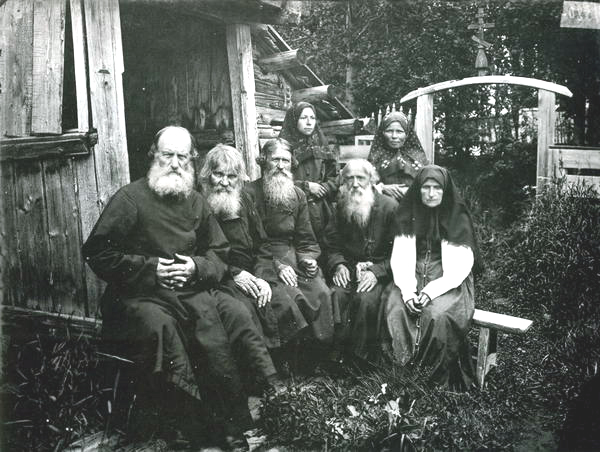

If Russia had fallen seriously behind the industrial world, as demonstrated in the Crimean War, how retarded was Russian Society? A discussion (something less comprehensive than a survey) of the Russian social situation is attempted here.
More than one hundred ethnic minorities still remain a part of Russia. Generally, each minority practiced its own religion. The entire world, including Russians themselves know that the Russian Orthodox church is the most widespread religion in Russia. The problem here, is that this is simply not true. Many Russians practice "doubling" (the simultaneous practice of two regions, not being conscious that these beliefs are not a single belief). Thus Russians in an Orthodox Russian church may not know who Christ is (cannot identify Christ upon a cross). Many of the "Russian Orthodox Christians" also practice paganism. Yet such people insist they are Russian Orthodox Christians, even when they go home through the forest, knowing that the god of the forest (леший), god of the rivers (водянои or водолей), god of the sea (нептун), the house god (домовой), the god of thunder (громовержец), and the sun god Yarilo (ярило) surround them. Fearful to leave their homes, should the god of wind (ветрило or ветродуй) look up, from beneath his long eyebrows and thereby curse these Christians. This is not a local phenomena, but could be found throughout Lithuania, Poland, Latvia, the Ukraine, even among the Buryiat (click to see a Buryiat). Even now, many Russians believe in this form of Christianity, celebrating Ivan Kupala Day or the Feast of St. John (иван купала), which occurs exactly six months after the Winter solstice, thus during the mid Summer. This celebration (иван купала) may be observed in the Russian opera Mlada. Similarly, paganism may be found in the book "Master and Margarita" (<<Мастер и Маргарита>>) by Michail Bulgakov (Михаил Булгаков). Clearly, at the time of the Crimean War, such a view of religion was common. But wait ... there is more!
Katherine the Great II (1729–1762) persecuted the "Old Believers" (староверцы). One need only recall the opera "Khovanshchina" by Modest Mussorgsky (1820-1869), where "Old Believers" felt they had no choice but to committ suicide. Indeed, to avoid persecution, some of the "Old Believers" practiced their services in hidden places such as in their cellars. The "Old Believers" were in some respects analogous to the American "Pennsylvania Dutch" (Anabaptists), or even to the Hassidic Jews in that all three religious groups rejected more modern ways and wished to live in isolation from what they viewed as a corrupting society. The "Old Believers" (староверцы) were fragmented into different groups:
Of course, there were other groups of "Old Believers" who were without priests and felt that the only place to practice their beliefs was in heaven, and rejected any accommodation with any Russian state. These included the Fedoseevtsy, Filippovtsy, and the Spasovtsy. Clearly, the "Old Believers" certainly existed during the Crimean War, and indeed, up to and during the October Revolution of 1917, and still exist.
Jews also compounded the complex picture in Russia. One need only recall the Tisza River (река тисса) blood libel trial in April 1882. This was made into a film "Memories of a River", by Judit Elek in 1990. Lajos Kossuth felt that this trial was a disgrace to Hungary, but this was the social environment at the time (give or take a few years) of the Crimean War. However, this was not an isolated reality. In 1913 in Kiev, there was the internationally infamous "Beiliss Blood Libel Affair" as well. The writer Melamed wrote the novel "The Fixer" and a film with the same title was made in 1968 about the Beiliss Affair. From 1900 to 1922, many pogroms took place in Russia (circa 600 pogroms a year by about 1906). Jews were murdered in large numbers by "Nationalist" heros such as Petalura and Denikin. Obviously, a program of industrialization and modern education requiring ALL peoples to work together in Russia had to contend with this social context. Thus on the eve of the October Revolution, the Czarist regime set the population against itself in hatred, as an attempt to hold onto power, placing industrialization and social reform in secondary place, thus hastening the end of the Czarist system.
© Copyright 2006 - 2018
The Esther M. Zimmer Lederberg Trust
 Website Terms of Use
Website Terms of Use